Learn about the stag beetles, including how to identify them from similar species, where they're found in the UK, what they eat, and how you can help them in your garden, in our expert guide by the People's Trust for Endangered Species (PTES).
Where are stag beetles found?
Whilst there are over a thousand species of stag beetle across the world, we only have three members of the stag beetle family here in the UK; the stag beetle (Lucanus cervus), its smaller relative the lesser stag beetle (Dorcus paralellapipidus) and the rhinoceros beetle (Sinodendron cylindricum). You can see the differences between each type, and with other beetles, on this PDF guide by the PTES.
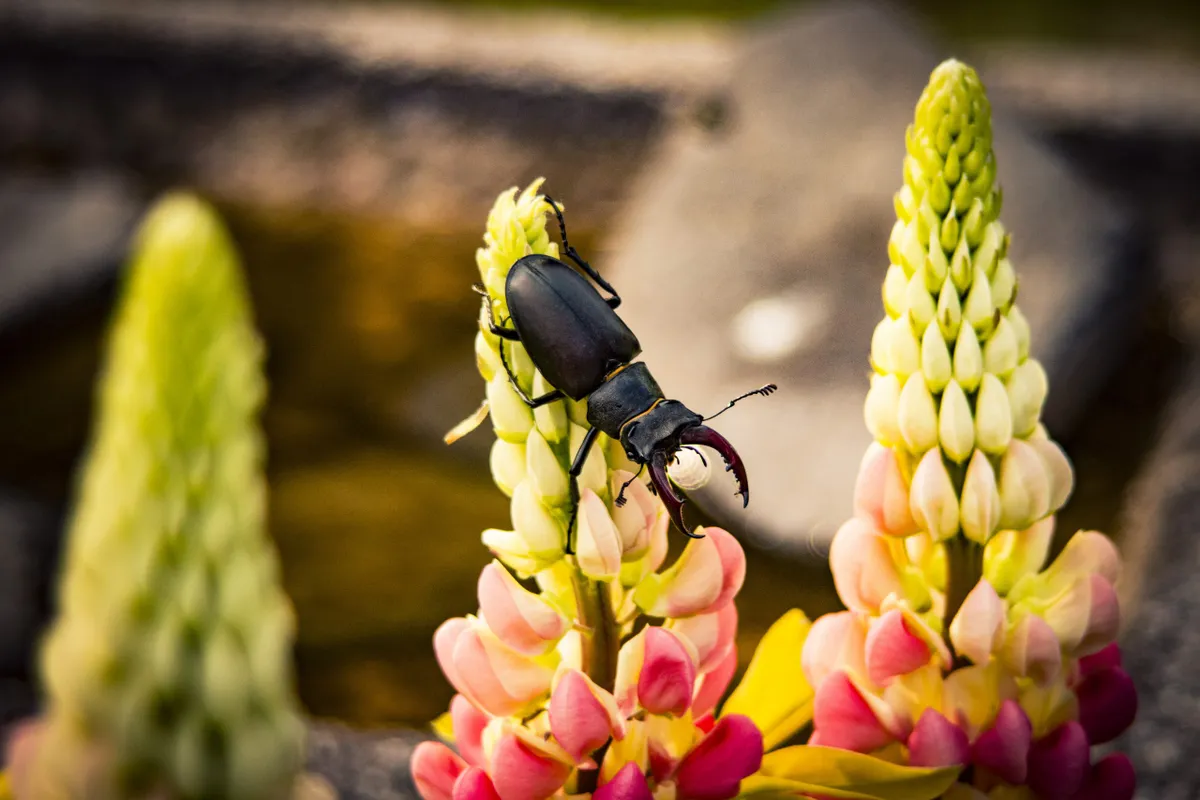
Stag beetles are mainly found across south-east England (see the distribution map below) and throughout most of Europe. Because they spend the majority of their life cycle underground, their distribution is influenced by both climate and soil type.
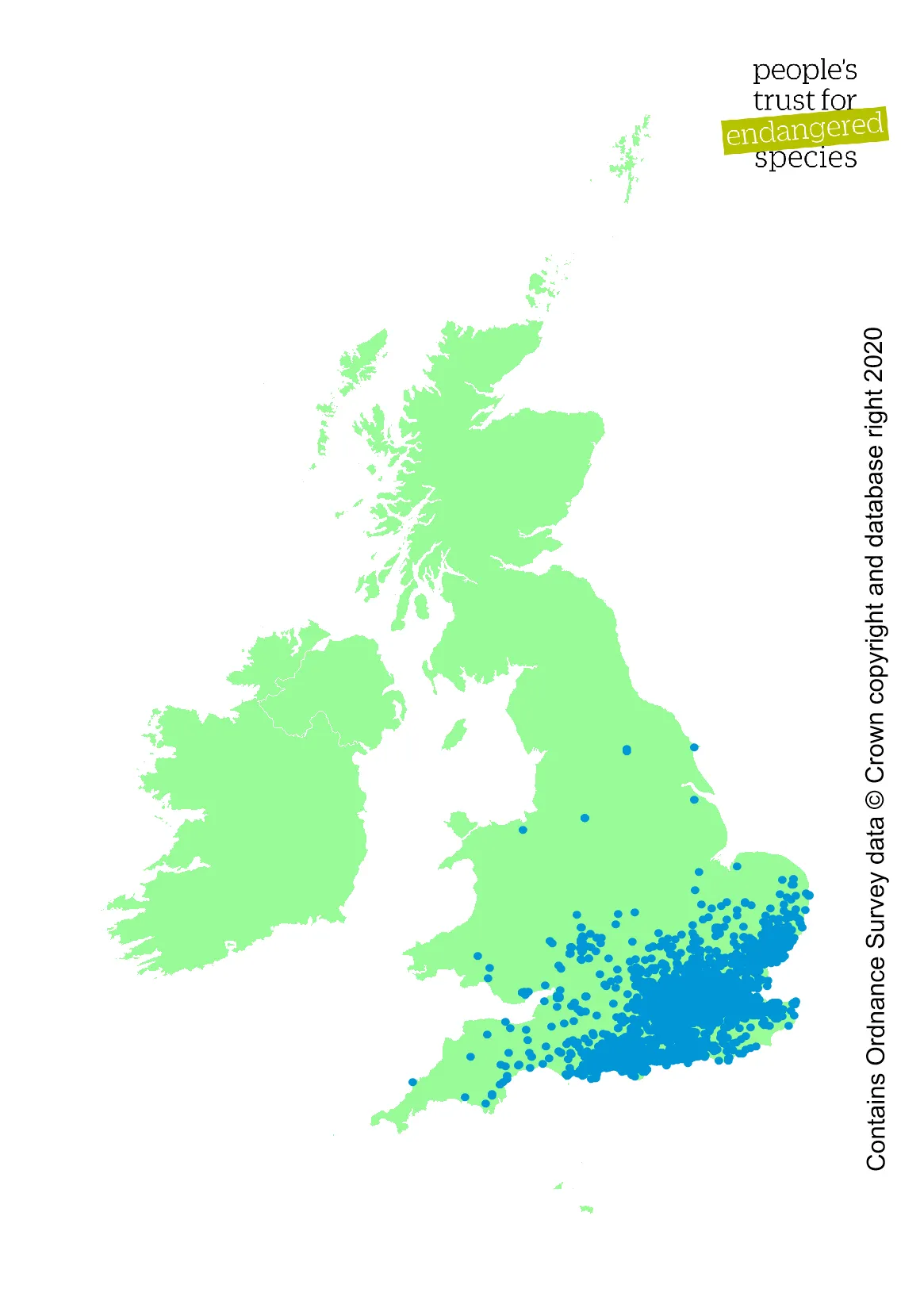
They also tend to be found in areas with the lowest rainfall and highest average temperatures. Stag beetles don’t live in areas with chalky soils, as these are hard for them to burrow down into and dig their way out of.
How big are stag beetles?
Male stag beetles measure between 35-37mm in body length, whilst the females' body length measures between 24-48mm. Larvae measure up to 80mm long.
When can adult stag beetles be seen?
Adult stag beetles can be seen between late May and August.
What do stag beetles eat?
They may look charismatic, with their large showy jaws, but for most of their life, stag beetles are large white grubs (called larvae), living underground. Often found in tree stumps and in decaying roots, they feed on rotting wood for several years as they grow and develop before finally transforming into an adult beetle.
Adult stag beetles can’t eat; instead, for the few weeks they live, they rely on the fat reserves built up during their larval stage. However, they can use their feathery tongue to take moisture and energy from rotting soft fruit and sap runs.
Do stag beetles bite?
The male stag beetles’ fearsome-looking jaws are actually only used for wrestling other males to win over a female. They aren’t designed to ‘bite’. It is possible for a female stag beetle to pinch if you were to pick one up, but this is quite unlikely and it’s best to leave them be anyway.
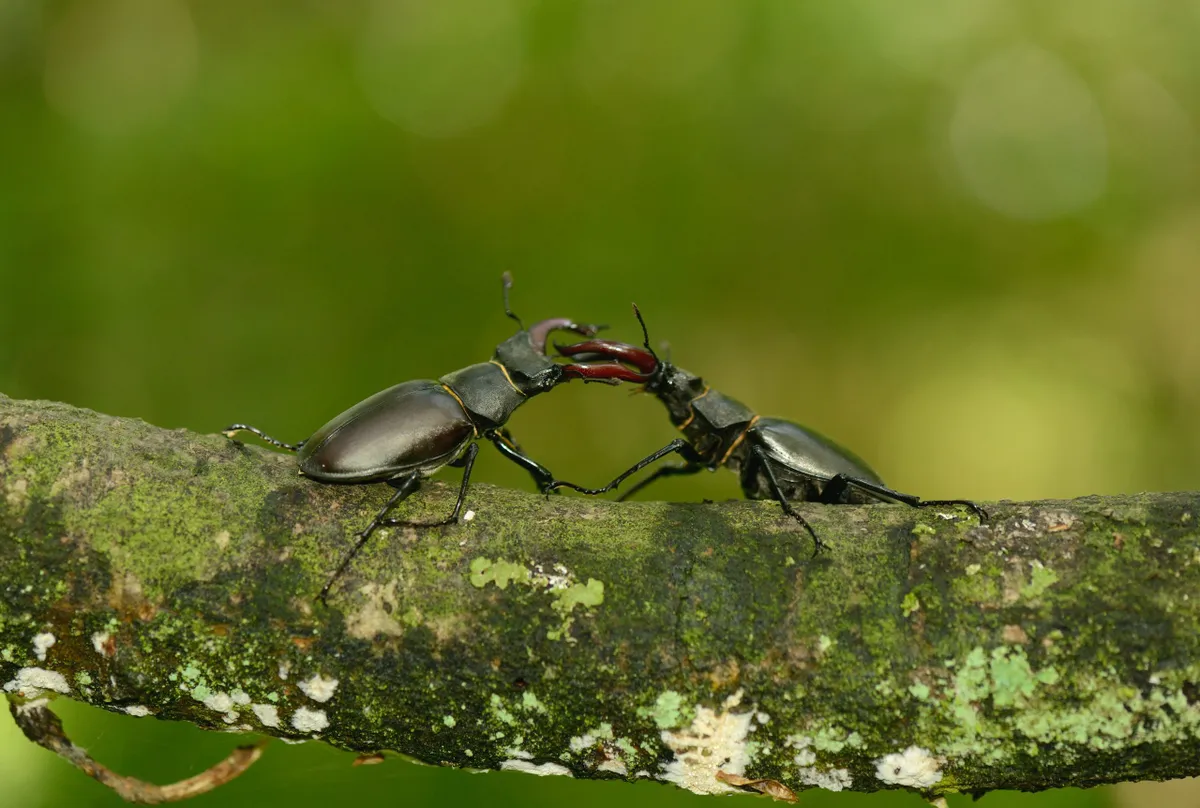
How many eggs does a stag beetle lay?
Females usually return to the place where they emerged and dig down to lay about 30 eggs in or next to rotting wood beneath the soil.
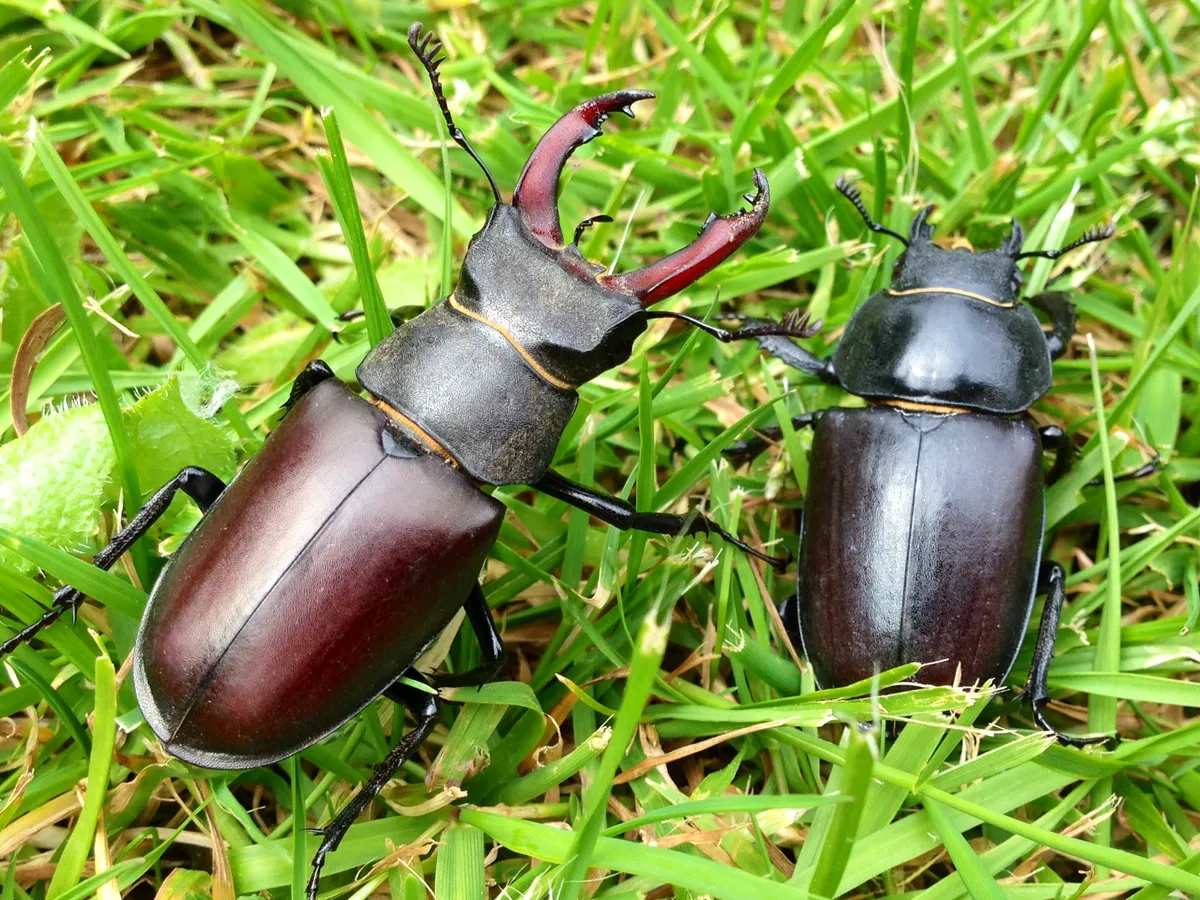
How can I help stag beetles in my garden?
Stag beetles are completely dependent on dead and decaying wood, so the easiest way to help stag beetles is to have trees and shrubs in your garden, and to keep any stumps if you ever have to remove any.
If you don’t have any old trees or mature shrubs in your garden, you could consider planting some; in years to come they will be a natural source of dead wood for stag beetles.
The next best thing is to build a log pile. Local firewood sellers and tree surgeons are a potential source of wood. Broadleaved species (trees that don’t have needles) are best and make sure that the logs are either partially buried or in contact with the soil as this creates the perfect conditions for stag beetles. Find out how to build a log pile for stag beetles in this PDF guide by PTES.
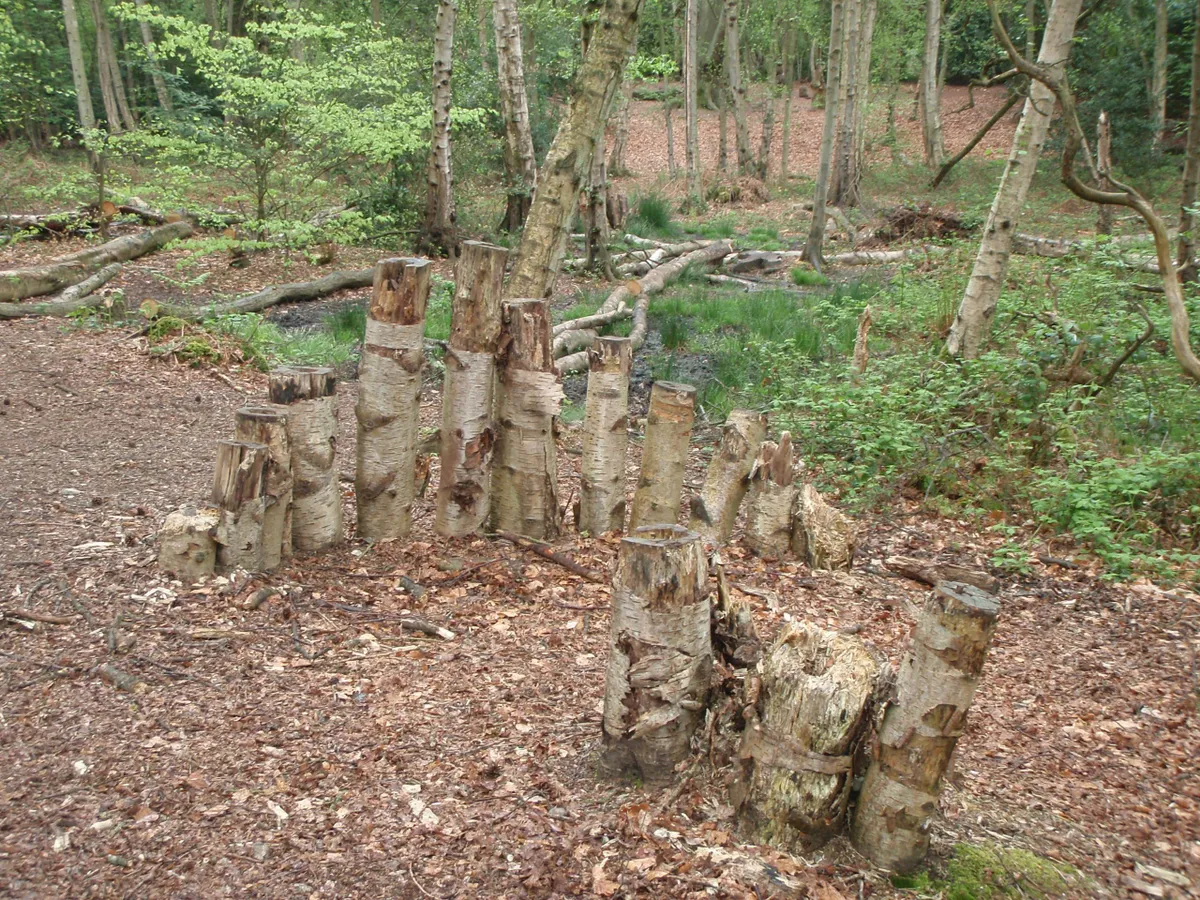
How do I know if I have seen a stag beetle larva?
Stag beetle larvae are large white grubs with an orange head, usually found underground in rotting tree stumps and roots. They feed on dead wood for several years before they are ready to pupate and develop into an adult beetle. To find out how to identify larva in this PDF guide by the PTES.
Where can I report a sighting of a stag beetle?
PTES has collected thousands of records of these beetles via its Great Stag Hunt since it began in 1998. If you spot a stag beetle (either as larva or an adult beetle flying on warm summer evenings), please send your records to PTES.
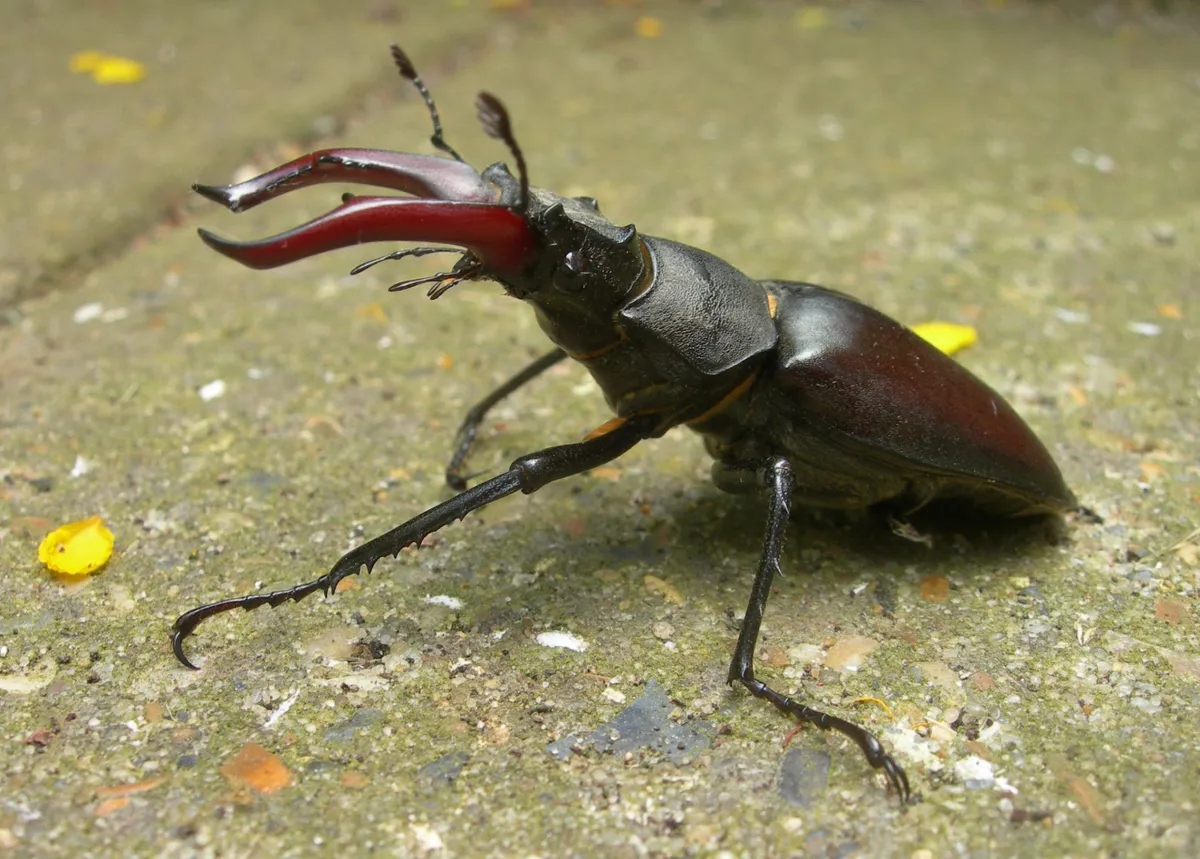
If you have a little more time to spare, you can go one step further and count stag beetles regularly throughout the summer for PTES.
Stag Beetle Weekend
PTES is calling for people to take part in their Stag Beetle Weekend, on Friday 5 - Sunday 7 June.
Anyone with a garden or an allotment can make their green spaces more friendly, and everyone can keep a lookout for stag beetles and submit records.
The London Wildlife Trust also collects records of stag beetles in London specifically, whereas PTES’ Great Stag Hunt collects records from all over the country.
Are stag beetles endangered?
In the UK, stag beetles are a priority species for conservation, due to their range contracting over time and continuing loss of habitat. Whilst their numbers appear to be stable at the moment, they’re declining across Europe and have already gone extinct in some countries like Denmark and Latvia.
What is being done to help stag beetles?
PTES has been working to save stag beetles for over 20 years, and continues to raise awareness about the importance of dead wood and encouraging people to value old trees which helps stag beetles and other invertebrates.
Back from the Brink’s Ancients of the Future project aims to find new sites for stag beetles particularly at the edge of their range. It is working with landowners to protect ancient trees and has run several deadwood roadshows.
Do stag beetles cause any problems?
No, this species feeds only on rotting and decaying wood; they can’t digest living wood. Stag beetle larvae are occasionally found in sleepers and fencing in gardens, but this is only where the wood is in contact with the soil and is already rotting down.
The People's Trust for Endangered Species (PTES) is a UK conservation charity created in 1977, ensuring a future for endangered species throughout the world.
PTES protects some of our most threatened wildlife species and habitats, and provide practical conservation support through research, grant-aid, educational programmes, wildlife surveys, publications and public events.
Main image: Male stag beetle in hand. © Aimi MacInnes

